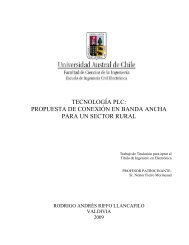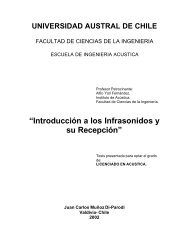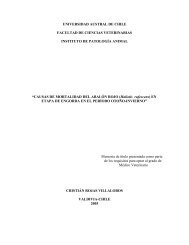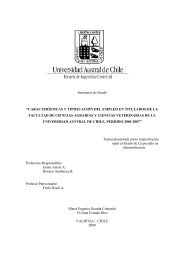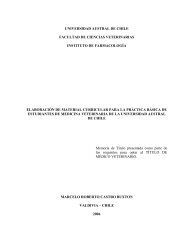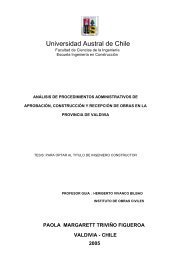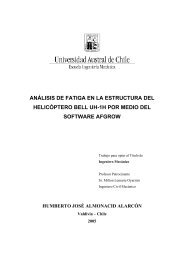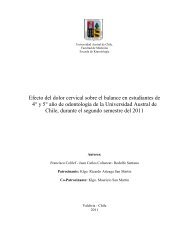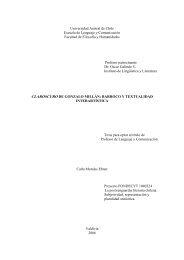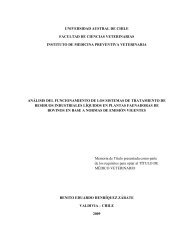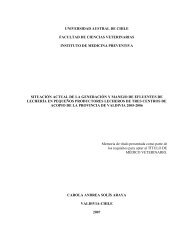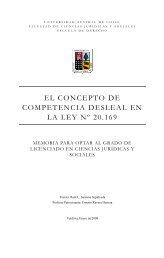Diversidad y control biológico de insectos - CyberTesis UACh ...
Diversidad y control biológico de insectos - CyberTesis UACh ...
Diversidad y control biológico de insectos - CyberTesis UACh ...
You also want an ePaper? Increase the reach of your titles
YUMPU automatically turns print PDFs into web optimized ePapers that Google loves.
sample, showing the potential use of this nuclear fragment for strain fingerprinting. A<br />
eleven sub-sample, representing the major cla<strong>de</strong>s, was additionally analized by sequencing<br />
the elongation factor 1 alpha (EF1-α) gene. The resulting EF1-α topology mostly agreed<br />
with the B locus topology and allowed to analyze the genetic diversity of the fungus in<br />
Chile un<strong>de</strong>r current phylogenetic hypotheses for the B. bassiana complex, which suggest<br />
the existence of cryptic species into what is morphologically <strong>de</strong>fined as B. bassiana.<br />
Keywords: entomopathogenic fungus; biological <strong>control</strong>; population structure; elongation<br />
factor 1 alpha.<br />
Introduction.<br />
The haploid filamentous fungus Beauveria bassiana (Balsamo) Vuillemin (Ascomycota:<br />
Hypocreales) is a common soil inhabiting organism, consuming organic matter<br />
(saprophytic stage) and/or infecting arthropods (parasitic stage). Its pathogenic properties<br />
have been long recognized and have attracted much effort to use this fungus as a biological<br />
<strong>control</strong> agent against many agricultural, medical and veterinary important pests. Several<br />
biological <strong>control</strong> programmes based on this fungus have successed in recent years, but in<br />
other cases more erratic results have been obtained. Some of these failures could have been<br />
explained and overcome if a better un<strong>de</strong>rstanding of life traits, ecological interactions and<br />
phylogenetic constraints were available.<br />
The efforts directed to un<strong>de</strong>rstand the above mentioned issues are limited by the lack of<br />
enough reliable phenotypic characters to discriminate among species into the genus and<br />
among strains into the species. The genus Beauveria harbours several species <strong>de</strong>fined<br />
mostly by the conidia morphology, while strain i<strong>de</strong>ntity at infra-species level is even more<br />
unclear if morphology is the only criteria.<br />
The species and strain i<strong>de</strong>ntity is an integral part of any environmental risk and efficacy<br />
assessment structure. In consequence, biochemical and molecular tools have been used to<br />
fingerprint strains of particular interest. The mitochondrial DNA has been the preferred<br />
target of infra-species studies because of its faster evolution rate, but recently the nuclear<br />
DNA has arose as another valid alternative. Nuclear genes are suitable for intraspecific<br />
studies as they serve as nonlinked genetic markers, converse to mitochondrial genes which<br />
18



